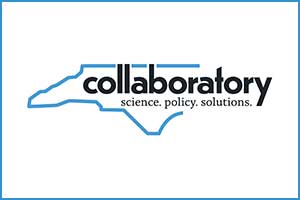If I asked you for a dollar on the first of July and told you that I was going to use it to help cure diseases, develop new technologies for energy storage, advise county and city governments on storm water management, perform symphonies, produce works of art, teach first generation college students, promote the state of North Carolina to the nation and world, and give you the dollar back at the end of the next June along with some extra change, you would think that deal was too good to be true.
Let’s analyze what happens to the approximately $540 million dollars in appropriations the legislature sends to our Chapel Hill campus every year to support the nation’s first public university.
The first thing our faculty and staff do is multiply the money by raising $1.16 billion more dollars in externally-funded research, an amount that places UNC in the top 10 federally-funded research universities in the US, higher than Harvard, MIT, or UCLA. Research at UNC develops new cancer therapies, supports highway safety, helps understand the effect of storm surges on the nation’s coastlines, and even discovers new exoplanets. Research money employs about 9,500 people in 90 counties of North Carolina, and generates $90 million in purchases from 6,500 businesses in 95 of our counties.
In addition to appropriations, UNC collects over $400 million more dollars in tuition from almost 30,000 graduate, undergraduate and professional students. Much of this money comes from outside the state and contributes to our state gross domestic product; the rest keeps tuition dollars at home where they can work for the people of North Carolina, while providing the #1 best bargain in higher education for the student from North Carolina. This year, our students came from 98 North Carolina counties and 40% of them were from rural areas. Eighteen percent of these students will be the first in their families to graduate from college. They will become the physicians, lawyers, artists, historians, business executives, government leaders, engineers, and teachers of tomorrow. They will emerge with a great education, a diploma from one of the top five ranked public universities, and well-prepared to be the workforce of the future that will attract new industries to North Carolina.
In addition to teaching and research, UNC supports innovation. Ideas and inventions from UNC researchers have led to the formation of 274 North Carolina companies. These companies employ over 9,000 North Carolina citizens and generate $14 billion in annual revenue in our state. Together with UNC’s affiliated enterprise, UNC Health, itself a $4B enterprise, these companies and our campus research operations represent 2.9% of the state’s gross domestic product. The estimated tax revenue from this slice of our economy is more than the $540 million in appropriations allocated to us.
Every dollar UNC-Chapel Hills receives from the state legislature comes back to the taxpayers with some spare change.
Even though it sounds like a deal that is too good to be true, the public employees of the first and most public university in the US deliver on this promise year after year. It’s an investment the people of North Carolina can make with confidence.
Chris Clemens is Provost at the University of North Carolina at Chapel Hill and Jaraslov Folda Distinguished Professor of Physics and Astronomy
Any opinions expressed in this article are not to be taken as an official position of the University of North Carolina at Chapel Hill

